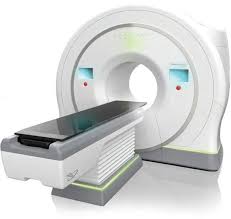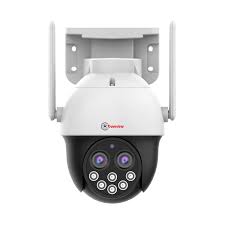X-ray scanners have become an integral part of security measures in various industries, including transportation, healthcare, and law enforcement. These machines use X-rays to create images of the inside of objects and are commonly used to detect weapons, explosives, drugs, and other contraband.
In the transportation industry, X-ray scanners are used to screen luggage and cargo at airports and seaports. These machines can quickly scan large volumes of baggage and identify any potential threats without the need for manual inspection. This not only increases efficiency but also enhances security by minimizing the risk of human error.
In healthcare, X-ray scanners are used to diagnose various medical conditions. They can produce detailed images of bones, organs, and tissues that help doctors identify injuries or diseases. Portable X-ray machines are also used in emergency situations where immediate diagnosis is required.
Law enforcement agencies use X-ray scanners to inspect vehicles for hidden compartments or contraband. These machines can scan through metal and non-metal surfaces, making it easier for officers to detect hidden objects that may be missed during a manual search.
X-ray scanners have evolved significantly over the years with advancements in technology. Modern machines are equipped with advanced features such as automatic threat detection algorithms and real-time imaging capabilities that allow operators to quickly identify potential threats.
While X-ray scanners have proven to be effective in enhancing security measures across various industries, there are concerns about their potential health risks due to exposure to ionizing radiation. However, modern X-ray scanners use low doses of radiation that pose minimal risk to human health.
Overall, X-ray scanners have become an essential tool in maintaining safety and security across various industries. With continued advancements in technology, these machines will continue to play a critical role in ensuring public safety while improving efficiency and accuracy in various applications.
6 Essential Tips for Safe Operation of X-Ray Scanners
- Wear protective clothing when operating the x-ray scanner.
- Ensure the area is cleared of all personnel before using the x-ray scanner.
- Check that all safety features are in place and operational before each use of the x-ray scanner.
- Be aware of any potential radiation hazards and take appropriate safety measures to minimize exposure to radiation from the x-ray scanner.
- Monitor regularly for any signs of damage or malfunction in the x-ray scanner system, and take corrective action as needed to ensure safe operation at all times.
- Follow manufacturer’s instructions carefully when installing, operating, and maintaining an x-ray scanner system to ensure its optimal performance and safety compliance standards are met at all times.
Wear protective clothing when operating the x-ray scanner.
When operating an X-ray scanner, it is essential to prioritize safety measures to minimize the risk of exposure to ionizing radiation. One simple yet effective tip is to wear protective clothing while operating the machine.
Protective clothing includes lead aprons, thyroid collars, and lead glasses. These garments are designed to shield the body from harmful radiation and reduce the risk of developing radiation-related health issues.
Wearing protective clothing is especially important for operators who work with X-ray scanners regularly. Prolonged exposure to ionizing radiation can have adverse effects on one’s health, including an increased risk of cancer and other radiation-related illnesses.
In addition to wearing protective clothing, operators should also follow other safety protocols such as maintaining a safe distance from the machine while it is in operation and ensuring that all safety features are functioning correctly.
By following these safety measures, operators can operate X-ray scanners safely without compromising their health or well-being. It is crucial to prioritize safety when working with any equipment that emits ionizing radiation, and wearing protective clothing is just one step towards ensuring that operators remain safe while performing their duties.
Ensure the area is cleared of all personnel before using the x-ray scanner.
When it comes to using X-ray scanners, safety should always be a top priority. One important tip to keep in mind is to ensure that the area is cleared of all personnel before using the scanner. This is because X-ray scanners emit ionizing radiation, which can be harmful to human health if exposure levels exceed safety limits.
Clearing the area of all personnel before using the scanner helps minimize the risk of accidental exposure. It also ensures that the operator can focus on operating the machine without any distractions or interruptions.
It’s essential to follow proper safety protocols when using X-ray scanners, including wearing protective gear and ensuring that the machine is calibrated correctly. However, clearing the area of all personnel is an often-overlooked but crucial step in maintaining a safe working environment.
By taking this simple precautionary measure, you can help ensure that your workplace remains safe and secure while using X-ray scanners. Remember, when it comes to safety, every precaution counts!
Check that all safety features are in place and operational before each use of the x-ray scanner.
When it comes to operating X-ray scanners, safety should always be a top priority. These machines use ionizing radiation to create images of objects, and while the radiation doses are typically low, it’s essential to ensure that all safety features are in place and operational before each use.
Before operating an X-ray scanner, it’s crucial to check that all safety features are functioning correctly. This includes verifying that the machine is properly calibrated, ensuring that the radiation source is adequately shielded, and checking that the machine has an automatic shut-off feature in case of malfunction.
Additionally, operators should always wear appropriate protective gear such as lead aprons and gloves when working with X-ray scanners. It’s also important to limit exposure time by minimizing the amount of time spent near the machine during operation.
By taking these precautions and regularly checking that all safety features are in place and operational before each use of an X-ray scanner, operators can help ensure a safe working environment for themselves and others around them. Remember, safety should always come first when working with any equipment that uses ionizing radiation.
Be aware of any potential radiation hazards and take appropriate safety measures to minimize exposure to radiation from the x-ray scanner.
While X-ray scanners have become an essential tool in maintaining safety and security across various industries, it is important to be aware of any potential radiation hazards associated with their use. Exposure to ionizing radiation can pose health risks, and therefore appropriate safety measures must be taken to minimize exposure.
Firstly, it is important to follow all safety instructions provided by the manufacturer when operating an X-ray scanner. This includes wearing personal protective equipment such as gloves, aprons, and lead glasses, which can help shield against radiation exposure.
Secondly, it is recommended that individuals limit their exposure time near the scanner as much as possible. This can be achieved by ensuring that only trained personnel operate the machine and minimizing the number of people in the vicinity during operation.
Lastly, regular maintenance and calibration of the X-ray scanner are crucial to ensure that it is functioning correctly and emitting safe levels of radiation. It is important to schedule routine inspections with a qualified technician who can ensure that the machine meets all safety standards.
In conclusion, while X-ray scanners are a useful tool for enhancing security measures across various industries, it is important to take appropriate safety measures to minimize exposure to radiation. By following all safety instructions provided by the manufacturer, limiting exposure time near the scanner, and scheduling regular maintenance inspections with a qualified technician, individuals can ensure safe operation of these machines.
Monitor regularly for any signs of damage or malfunction in the x-ray scanner system, and take corrective action as needed to ensure safe operation at all times.
Regular monitoring of X-ray scanners is critical to ensure safe operation and prevent potential hazards. It is important to inspect the scanner system regularly for any signs of damage or malfunction, such as cracks in the casing, loose wiring, or faulty components. Any issues should be addressed immediately to prevent further damage and ensure safe operation.
In addition to regular inspections, it is also essential to follow manufacturer guidelines for maintenance and repair. This includes routine cleaning and calibration of the system to ensure accurate readings and optimal performance.
Taking corrective action as needed can help prevent accidents and protect both operators and the public from potential harm. Failure to monitor and maintain X-ray scanners can result in serious consequences, including equipment failure, inaccurate readings, or even exposure to harmful radiation.
By regularly monitoring X-ray scanners for any signs of damage or malfunction and taking corrective action as needed, operators can ensure safe operation at all times. This not only protects individuals but also helps maintain the integrity of the system and ensures reliable performance over time.
Follow manufacturer’s instructions carefully when installing, operating, and maintaining an x-ray scanner system to ensure its optimal performance and safety compliance standards are met at all times.
When it comes to X-ray scanners, safety is of the utmost importance. One crucial tip to follow is to always adhere to the manufacturer’s instructions carefully during installation, operation, and maintenance of an X-ray scanner system.
The manufacturer’s instructions provide detailed guidelines on how to safely and effectively use the scanner system. It includes information on how to properly install and set up the machine, how to operate it efficiently, and how to maintain it regularly.
By following these instructions, you can ensure that the scanner system performs optimally while meeting all safety compliance standards. Neglecting these guidelines can result in reduced performance or even worse, malfunctioning of the machine which may lead to harm or damage.
Additionally, proper maintenance of the X-ray scanner system ensures that it remains in good condition and continues working efficiently for an extended period. Regular checks and servicing help identify any issues before they worsen or cause any damage.
In conclusion, following the manufacturer’s instructions carefully when installing, operating, and maintaining an X-ray scanner system is essential for optimal performance and safety compliance standards. It is crucial for everyone involved in using these machines to be aware of this tip and implement it accordingly.




